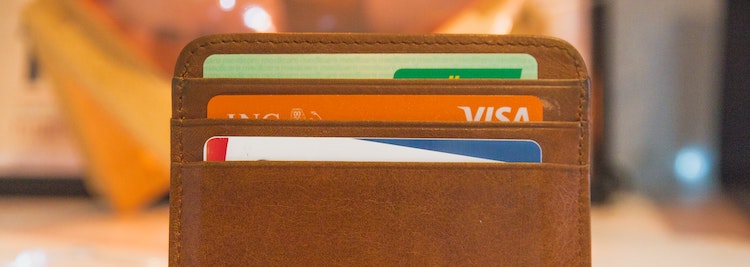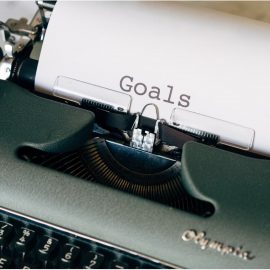

This article is an excerpt from the Shortform book guide to "Your Money or Your Life" by Vicki Robin and Joe Dominguez. Shortform has the world's best summaries and analyses of books you should be reading.
Like this article? Sign up for a free trial here .
Do you want to cut expenses? Would like to build up savings or simply live on less?
In Your Money or Your Life, Vicki Robin and Joe Dominguez offer nine strategies on how to cut expenses. From avoiding shopping to doing things yourself, these approaches for cutting expenses can make a difference in your life.
Read more to discover how to cut expenses.
9 Strategies for Cutting Expenses
Some of these strategies might not be new to you, but it’s likely that you’ll pick up some fresh approaches that can make a difference in the way you live—and enjoy—your life.
1. Avoid Shopping
We’ve been conditioned to fill immaterial needs with material goods. Thus, when we shop, we feel tempted to buy things, even if we didn’t plan to spend money in the first place.
You can cut expenses by shopping less. Here’s how:
- Don’t go shopping when you don’t have anything you plan to buy. Be deliberate with your purchases.
- Don’t mindlessly scroll through shopping websites for amusement. Only visit these when doing research or when you have a plan for what to buy.
- Handle promotional emails by unsubscribing or filtering them. Emails can trigger shopping desires.
- If you have an itch to buy something, wait a few days so you can figure out if you really need it or whether you’re just impulse buying. Research shows impulse buying is common (75% of people admit doing it), but the majority who do it regret it later.
- Pay attention to your shopping triggers. Men tend to impulse buy when drunk; women do it when they’re sad or bored.
2. Spend Only What You Can Comfortably Afford
Try to limit spending to things you can afford without having to take on additional debt. Here are some general strategies:
- If you use credit cards, spend only what you can pay off each month.
- If you want to buy something, but don’t have enough money, wait to buy until you do.
But what about buying houses, where most people have to take on debt? Investing in housing or something else that appreciates in value over time, can be a good investment. Always make sure to weigh your choices to take on as little debt as possible, and work to pay it off quickly.
3. Repair Your Possessions
Every time we buy something new, there are energy, labor, and environmental costs that go into producing that item. Though it may be tempting to buy cheap replacements for things that break, you’ll save resources and maybe even money in the long-run by repairing things instead of replacing them with new ones.
4. Use Stuff to the End
Many perfectly good items end up in the landfill just because we decide we want a newer item instead. Using something until it’s completely worn out helps you avoid frequent spending on the same items.
Here are some more strategies cut expenses by using things longer:
- If you do successfully wear things out for their intended purpose, ask whether you can repurpose them in some way. For example, use grubby dish towels as cleaning rags instead. Look to the internet for suggestions.
- Resolve to upgrade less often than you usually do. For example, instead of buying the latest phone model every year, resolve to only upgrade every two years.
If you’re already on the frugal side, remember not to hold onto items so long that it costs you more life energy than it’s worth. For example, if you’ve worn your running shoes so thin that they’re hurting your knees, invest in new shoes—they’ll be cheaper than having to pay for knee surgery.
5. Dive Into DIY
These days there are more resources available than ever to help you learn how to do work yourself. Take advantage of online classes and YouTube videos dedicated to imparting new skills. If you do choose to hire out the work, watch it being done and use it as an opportunity to learn something that you can use later.
6. Think About What You Need
Thinking about what you need ahead of time can be a powerful tool to avoid buying things on a whim.
Here are some strategies to plan for long-term purchases:
- Create a list of things you anticipate needing to buy in the coming year.
- Research different brands and the price range of the item.
- Use sites such as online sellers or Craigslist to compare pricing, and set notifications to learn when an item has dropped in price.
- Buy around the holidays, or other times when retailers offer discounts.
Anticipate things you’ll need in the short-term, too. For example, rather than buying expensive one-off items at a convenience store, think about what you need before you need it and try to buy it ahead during a supermarket trip or online where you can get it for cheaper.
7. Investigate Durability and Multipurpose Uses
In addition to price research, investigate how long something will last. If you plan to use something frequently, learn if it will last enough time to make it worth its price. On the other hand, if you don’t plan to use a product that frequently, you don’t need to invest as much money in ensuring it’s durably constructed. Less frequent use means it’ll naturally last longer.
Here are two ways to assess a product’s durability:
- Examine it in-person. Look for signs like well-sewn seams and strong material.
- Read online reviews where users share their impressions and experiences.
For example, let’s say you’re in the market for a washing machine. You come across a model that seems like a reasonable price, but notice that most of the online reviewers have checked a box saying they would not recommend buying it. Plus, many complain that the machine broke down after just a few uses and required frequent repairs, costing them more money in the long-run. You decide it’s worth looking into a slightly more expensive machine that users recommend.
Buying multipurpose items also helps you cut expenses because you pay the price of one item instead of several. For example, one all-purpose pot can eliminate the need for other appliances like a rice cooker or deep fryer.
8. Don’t Pay Full Price
There are four main ways to purchase items for less than their original price:
- Search for the best price. Use price-comparison tools on your web browser or metasearch sites to find which retailers have the best prices. Call retailers that don’t list their prices online. Many retailers have programs to match lower prices from other stores in town, or even some online stores.
- Learn to haggle. An item’s listing price is usually high. There’s no harm in asking for a lower price. Ask for a lower price when a sale has already ended, when you’re paying in cash, or for items already being offered at a discount. This strategy works best at small, locally-owned stores.
- Buy previously owned or used items. Many items put up for sale are still in very good condition. Try thrift stores, garage sales, and online sites like eBay and Craigslist. Garage sales tend to be best for small home appliances and furniture, while thrift stores are best for clothes. But thrift stores often offer more than clothes, so explore widely.
- Get stuff for free. Sites like Buy Nothing Project and FreeCycle Network connect people with goods others are giving away.
9. Devise New Ways to Meet Your Needs
As you think about how to cut expenses, it’s helpful to understand that living frugally is not about living a life of deprivation. It’s about learning to meet your needs without having to spend vast sums of money, and ideally, without spending much money at all. In order to do this, we need to listen to our needs and desires and ask if they can be met without spending money.
For example, we might value freedom and look to travel to satisfy it. Travel allows us to feel free in our movement. But perhaps the desire to travel is really a desire for novel experiences and a break from our routines. In that case, it might be possible to satisfy that need closer to home by seeking out novel experiences in our own area. We could take a vacation within a few hours drive of where we live, or explore a new part of town we’ve never been to before.
These strategies to cut expenses can help you get closer to the life you want. You can start implementing them today.

———End of Preview———
Like what you just read? Read the rest of the world's best book summary and analysis of Vicki Robin and Joe Dominguez's "Your Money or Your Life" at Shortform .
Here's what you'll find in our full Your Money or Your Life summary :
- The 9 steps to reach financial independence
- How to change your entire relationship with money and live a more meaningful life
- How to align your spending habits with your values, purpose, and dreams






